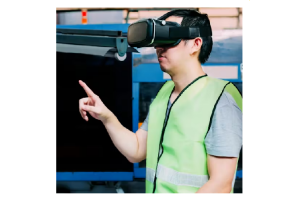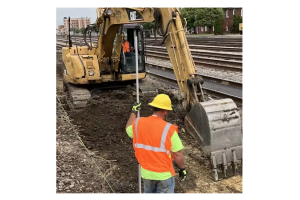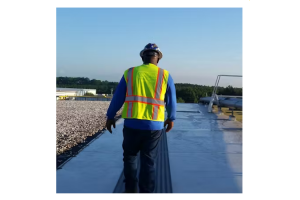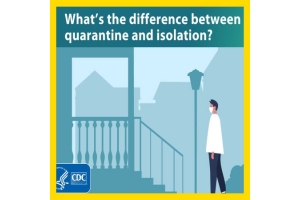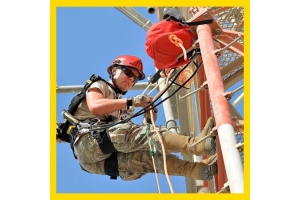Currency
-
December 27, 2021What does OSHA say about first-aid requirements at a worksite? Find out in our latest episode of the podcast where Editor Sydny Shepard dives into 1910.151 and the letters of interpretation for the standard.
We often talk about how to prevent illnesses and injuries from happening in the workplace, but even when your plans are near perfect, your procedures are well thought out and you have excellent employee buy-in, accidents can still happen. This is proven by the 2.1 million non-fatal injuries reported by private industry employers on worksites around the country in 2020, the latest year for data from the Bureau of Labor Statistics.
So, with all of these injuries and illnesses being reported on worksites, it’s worth it to take a look at OSHA requirements for responding to an incident at your facility. In this episode, we take a look at the OSHA standards -
December 27, 2021La Grange, IL — Unionized construction worksites may be nearly a fifth less likely to incur OSHA health and safety violations than their nonunionized counterparts, with positive effects on safety even more prevalent in the Midwest, a recent report shows.
Researchers at the Illinois Economic Policy Institute and the Project for Middle Class Renewal at the University of Illinois at Urbana-Champaign examined more than 37,000 OSHA inspections of construction jobsites conducted in 2019, nearly 2,900 of which took place at union worksites.
Findings show that the union worksites were 19% less likely to be cited for health and safety violations and, on average, had 34% fewer violations per inspection. Additionally, union worksites in Illinois, Indiana, Kentucky, Ohio and Wisconsin had at least 52.2% fewer violations per inspection than nonunion sites in those states. The union difference was greatest in Indiana, where union sites had 64.2% fewer violations per inspection. -
December 27, 2021Despite a 2019 fatality within the company, ALJ Home Improvement continues to ignore risks and is now facing $244K in new penalties.
Three federal safety inspections conducted at a Suffren condominium complex confirmed that a Rockland County roofing contractor repeatedly exposed residential roof workers to potentially deadly falls from 18 to 20 feet, according to a press release. OSHA identified nine willful violations in its inspections of ALJ Home Improvement Inc. work sites from May 11 through May 13, 2021. The violations include employees working without required fall protection while removing sheathing and performed other roofing work, and workers lacking protective headgear and face and eye shields to prevent injuries from flying or falling debris, plywood, nails and other objects.
Residential construction employers must generally protect workers against -
December 27, 2021Fall hazards remain a common problem across multiple industries and workplaces. In 2019, worker deaths stemming from slips, trips and falls climbed 11.3% from the previous year, according to Bureau of Labor Statistics data. Meanwhile, OSHA’s standard on fall protection – general requirements (1926.501) has topped the agency’s Top 10 list of most frequently cited standards for 11 consecutive fiscal years.
Other standards related to inherent fall risks and that routinely populate the list include those regarding ladders (1926.1053), scaffolding (1926.451) and fall protection – training requirements (1926.503).
“Most workers have some safety knowledge, but how do we get people to consistently apply the safety practices that they know?” asked Bradley Evanoff, occupational health physician and professor of occupational and environmental medicine at Washington -
December 20, 2021San Francisco — Worker deaths caused by exposure to methylene chloride are on the rise, according to researchers from OSHA and the University of California, San Francisco, who identified 32 deaths on top of those the Environmental Protection Agency had recently reported over a period spanning nearly four decades.
Methylene chloride is a solvent widely used in paint strippers, cleaners, adhesives and sealants. Analyzing 1980-2018 data from inspection reports, autopsy reports and medical records, as well as other resources, the researchers categorized cases either as consumer cases occurring in the home or those that happened on the job. Of the 85 deaths linked to the chemical, 87% were considered work-related. Previously, EPA had connected 53 deaths to the solvent.
The analysis also reveals that since 2000, work-related deaths related to paint stripping and bathroom -
December 20, 2021After an investigation was conducted, it was found that a Queens contractor failed to provide and ensure the use of effective fall protection safeguards that would have been prevented the death of a worker who fell about 60 feet from a roof on May 27, 2021, during the demolition of Brooklyn building. OSHA found that Richmond Construction Inc. did not provide any safeguards related to fall protection. A worker was demolishing a building at 1045 Flatbush Ave.. The worker fell from the roof into the building’s interior. Investigators then determined that the company failed to train its workers to recognize and avoid fall hazards.
OSHA cited Richmond Construction for nine willful, repeat and serious violations of workplace safety standards and proposed penalties totaling $374,603. OSHA determined that Richmond Construction failed to:
● Provide employees with effective -
December 20, 2021Pittsburgh — United Steelworkers is calling on the Environmental Protection Agency to bolster EPA’s Risk Management Program Reconsideration final rule to enhance worker protections.
In comments submitted to the agency in July, USW urges EPA to take several steps the union believes will prevent future incidents at chemical facilities. Those steps include:
● Requiring facilities to involve workers and their representatives in the prevention of catastrophic releases, and sharing all information related to an incident and its prevention.
● Reinstating root cause analysis for chemical releases and near misses.
● Reinserting third-party compliance audits as part of the RMP rule, and completing audits after any incident meeting the definition of a catastrophic release.
● Requiring industries outside of the chemical, petroleum and paper manufacturing sectors to perform a safer technology and alternatives analysis of the processes and chemicals they use, as well -
December 20, 2021Work-related illnesses can worsen in the winter; prevent exposure to lung irritants and learn the respiratory diseases occupational workers are at risk for.
Why Does the Cold Season Cause Respiratory Problems?
The drop in temperature, weakening of the immune system and shortage of sunlight can produce seasonal respiratory diseases. Children and older adults are prone to the flu, asthma and lung problems during the winter months. When it’s cold outside, you will need to be aware of low humidity levels, the increase of contagious illnesses and seasonal health conditions.
Winter is a time that most people stay indoors. They could potentially become trapped with indoor air pollutants and building toxins. For employees who work in construction, trade occupations, industrial, mechanics and HVAC, daily exposures to harmful substances can build up over time and cause symptoms of lung problems. Workers who stay inside more frequently can have worsened symptoms of -
December 12, 2021The U.S. faced record-breaking heat in 2021 which endangered millions of workers exposing them to heat illness and injury in different work environments. Workers in both outdoor and indoor work settings without adequate climate-controlled environments are at risk of hazardous heat exposure.
OSHA and the Biden-Harris administration interagency effort and its commitment to workplace safety, climate resilience and environmental justice are publishing an Advance Notice of Proposed Rulemaking for Heat Injury and Illness Prevention in Outdoor and Indoor Work Settings on October 27, 2021. Currently, OSHA does not have a specific standard for hazardous heat conditions and this action begins the process to consider a heat-specific workplace rule, according to a press release.
“As we continue to see temperatures rise and records broken, our changing climate affects millions -
December 12, 2021Lockout tagout (LOTO) is viewed by many frontline workers as burdensome, inconvenient or production-slowing, but it is critical to any energy control program. It is also one of the most important OSHA standards. LOTO was one of federal OSHA’s top 10 most frequently cited standards following inspections of worksites.
Companies that fail to recognize and control machine hazards face regulatory fines—and risk the occurrence of serious and costly machine-related accidents. Companies and leaders must be held accountable, and they must understand the consequences of violating LOTO procedures.
Even though these procedures vary from company to company, across types of equipment and installations, there are commonalties in best practices that can be followed. Proper, easy-to-follow LOTO procedures can save lives, provide a sense of security, boost morale and help every employee get home safely.
Many companies provide LOTO training and best practices by teaching
